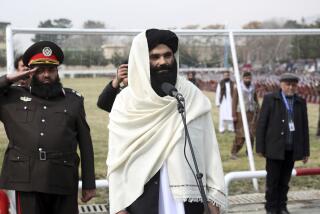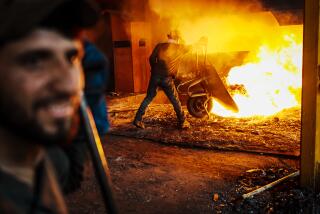Back Story: How the Taliban gained the upper hand in a key province in Afghanistan
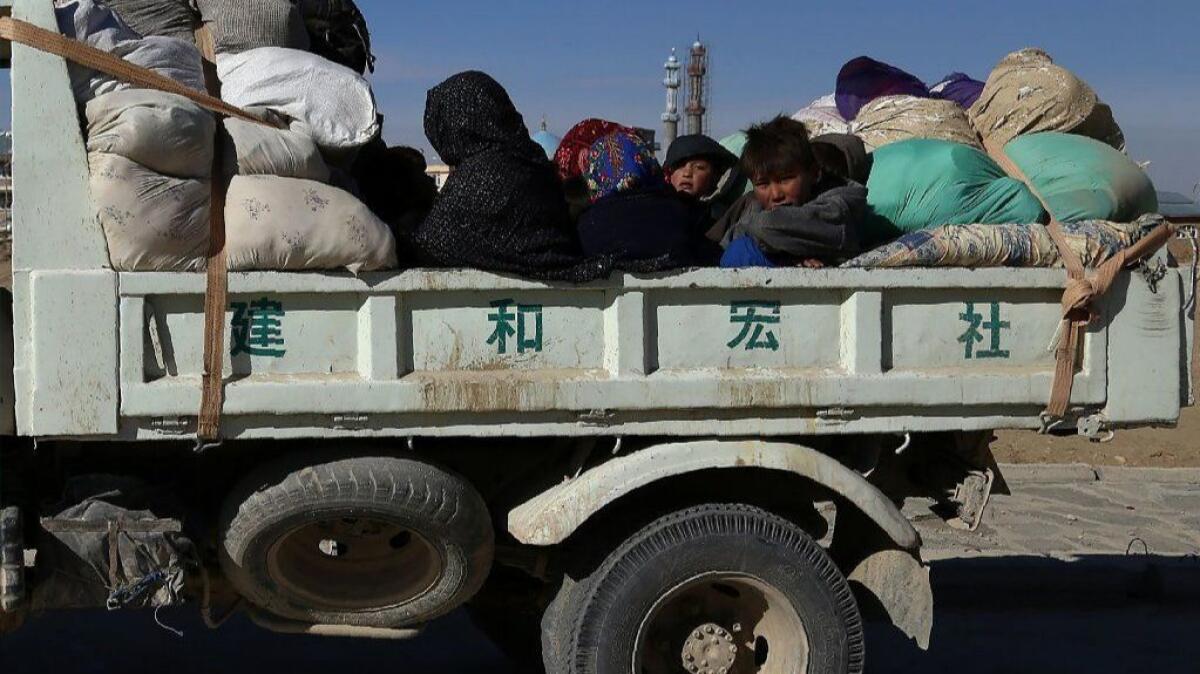
- Share via
Reporting from Kabul, Afghanistan — It was the deadliest incident involving U.S. troops in Afghanistan this year: An armored U.S. military vehicle struck a roadside bomb planted by the Taliban outside the city of Ghazni on Tuesday, killing three service members.
Army Sgt. 1st Class Eric Michael Emond of Brush Prairie, Wash., Army Capt. Andrew Patrick Ross of Lexington, Va., and Air Force Staff Sgt. Dylan J. Elchin of Hookstown, Pa., were elite special operations troops deployed to what has become one of the most intense theaters of fighting in the 18th year of the war.
The city is the capital of the rugged province that has the same name and has long been a center of Taliban influence. But in the last few months, the insurgent group has seriously threatened zones once considered safely in Afghan government hands.
The Taliban ruled Afghanistan until the U.S. drove it from power in 2001. The story of how the resurgent militants have gained the upper hand in a strategically vital province illustrates the crisis facing the Afghanistan government as well as the Trump administration, which has been grasping for a way to end the war and for the first time considering direct peace talks with the insurgents.
A Taliban surge
As early as 2015, shortly after the last U.S. forces left Ghazni province under a NATO drawdown, the Taliban controlled more territory there than the Afghan government did, according to the Afghanistan Analysts Network, a Kabul-based think tank.
The insurgents mostly confined themselves to rural areas, collecting taxes and adjudicating disputes. But starting this April, Taliban fighters began seizing the centers of “safe” districts close to the provincial capital, the country’s sixth-largest city, about 80 miles southwest of Kabul.
In most cases, fighters withdrew from the district centers — which house the offices of local administrators — as Afghan forces retook control within hours or days.
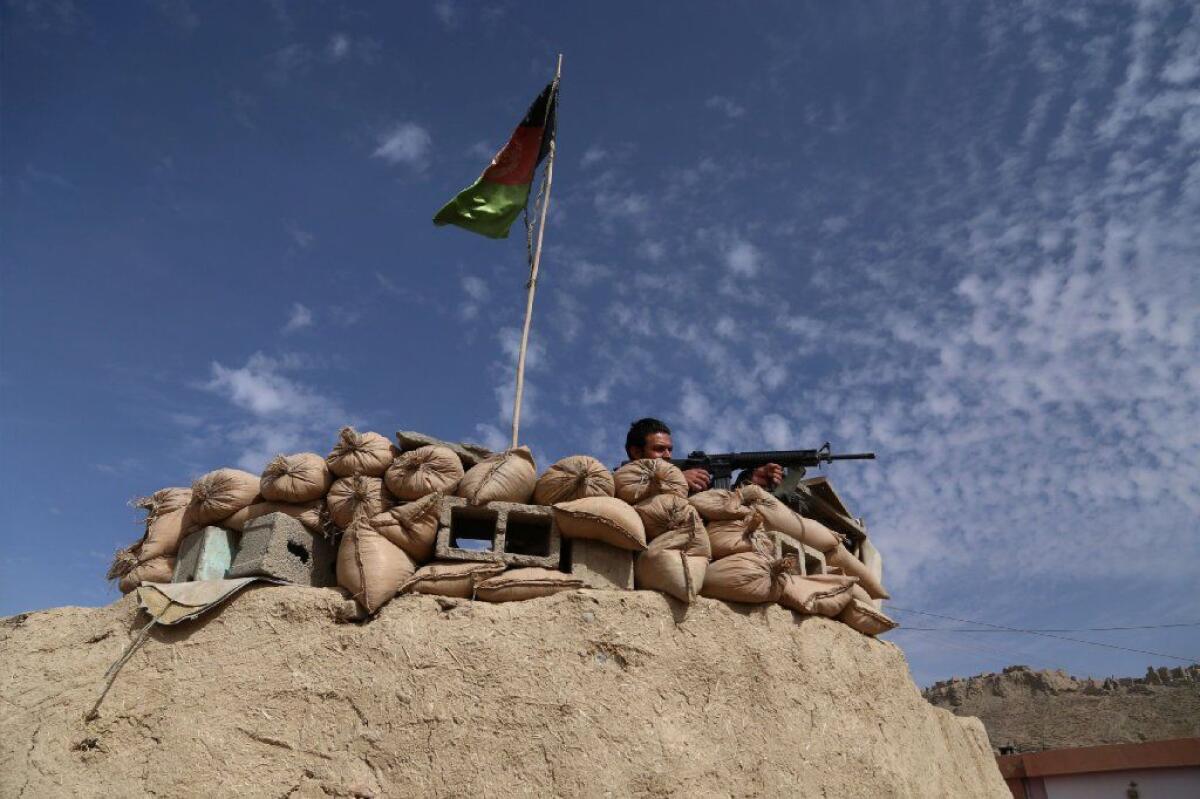
But the attacks reinforced a message that has become abundantly clear in recent years: With nearly half of Afghanistan’s people living in areas where the government doesn’t have full control, the Taliban could attack anywhere.
In August, the militants attacked the city of Ghazni, unleashing four days of brutal fighting that left more than 100 Afghan soldiers and police dead. It took a barrage of U.S. airstrikes and the arrival of several dozen U.S. special operations troops — some of whom sustained injuries in the fighting — to take back the city.
But the Taliban were only getting started.
Militants in shepherds’ clothing
For more than a year, a group of shepherds in Jaghori, a peaceful highland district of apple orchards and sloping hills in western Ghazni, had been talking up the Taliban.
“They were spreading rumors about how well equipped and dangerous the Taliban are now,” said Aref Ahmadi, a 42-year-old farmer whose family faced threats from the group starting in 2016, when a photo of his 5-year-old son wearing a homemade jersey of Argentine soccer star Lionel Messi went viral.
Jaghori was long known as one of the country’s safest districts. Made up mainly of ethnic Hazaras — a close-knit Shiite Muslim minority that has been persecuted by the Taliban and other extremists — it avoided bloodshed in part by allowing the militants to pass through their farmlands if they didn’t attack the local population.
But in early November, Ahmadi recalled, the pro-Taliban shepherds suddenly disappeared. A couple of days later, they returned in the company of marauding Taliban fighters, pointing out the houses of pro-government militia commanders and Hazara civilians who possessed weapons, he said.
The Taliban assault on Jaghori killed dozens of Afghan soldiers and police, and spread to the neighboring district of Malistan. Thousands of residents fled to Kabul and other cities.
When protesters marched on the presidential palace in Kabul to condemn the attacks, a suicide bomber struck, killing at least six.
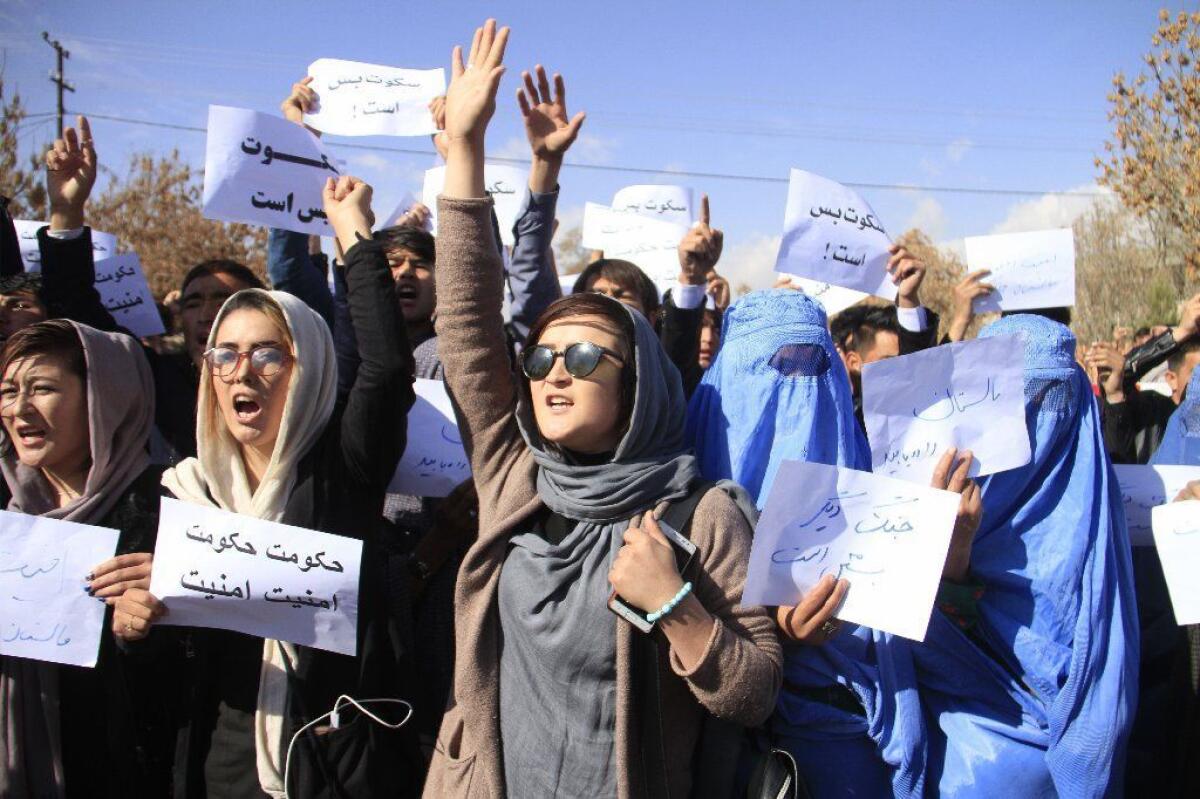
Afghan officials say they have regained control of the districts, but only about 300 families have returned, said Mohammad Arif Noori, a spokesman for the provincial governor.
“The government has told us to return in order to receive aid, but I can’t take the chance,” said Ahmadi, who fled to Kabul with his family. “There’s no guarantee that the district won’t fall again.”
An eye on talks
Analysts say the Taliban leadership sought to strengthen its bargaining position just as its negotiators prepared to meet with Zalmay Khalilzad, President Trump’s special envoy to Afghanistan, in Qatar.
The State Department has not commented on the matter, but some Afghan and U.S. officials believe Khalilzad is urgently seeking a deal because Trump wants to announce an end to U.S. military involvement in Afghanistan before the 2020 presidential election.
The Taliban — an ethnic Pashtun-dominated group with roots in southern Afghanistan — has increased its territory in northern areas populated by ethnic Tajiks and Uzbeks. By occupying Hazara areas, the group could show it controlled lands where all four of Afghanistan’s major ethnic groups lived.
“They wanted to enter into this dialogue with a strong message that they have large geographic areas under their control,” said Mohammad Arif Shah Jahan, a former intelligence chief in Ghazni.
A flailing government in Kabul
The Ghazni attacks have added to fears the Taliban is exacting too heavy a toll on the Afghan military.
Afghan President Ashraf Ghani recently acknowledged that more than 28,000 Afghan soldiers and police had been killed since 2015 — a figure that surpassed even the gloomier estimates. (About 2,200 U.S. service members have been killed in Afghanistan since the 2001 invasion.)
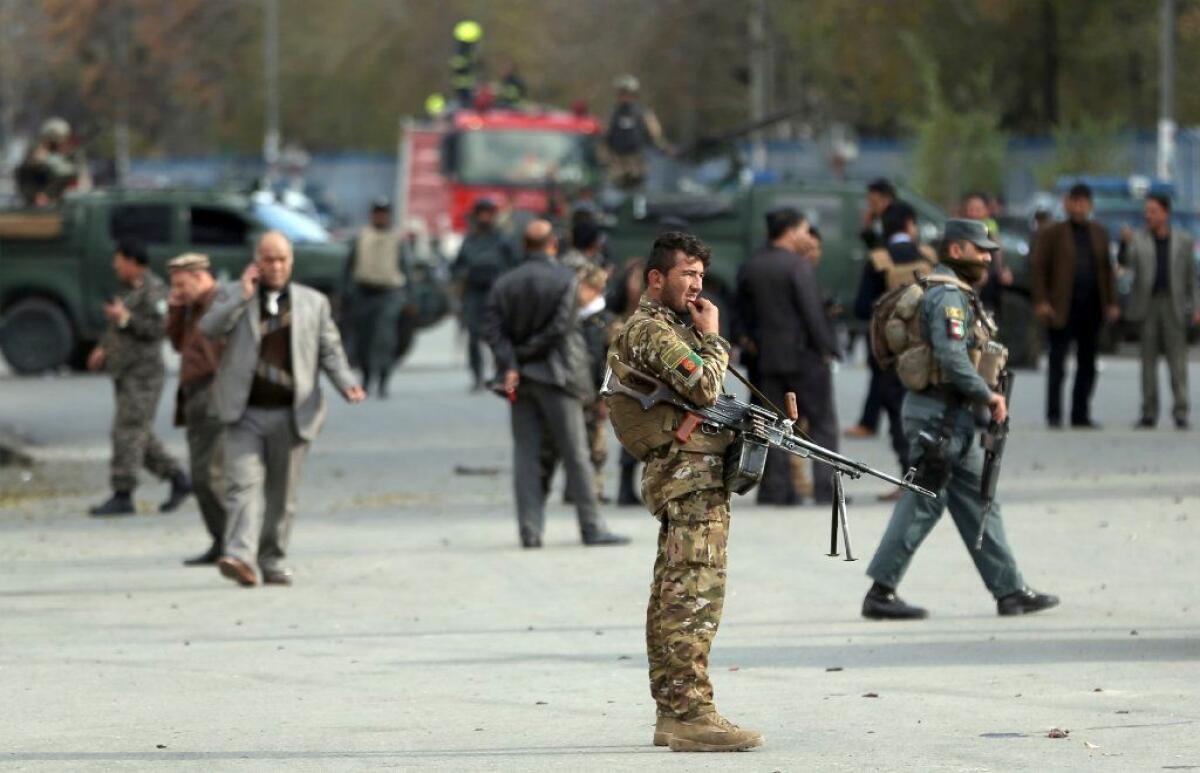
There are other problems in Kabul. Results from nationwide parliamentary elections last month — which weren’t even held in Ghazni because of insecurity — have yet to be announced because of widespread problems with new biometric devices used to verify voter identities.
The chaos has led to speculation that the presidential election scheduled for next April will be postponed, dealing another blow to the legitimacy of Ghani’s government and strengthening the Taliban.
“The Taliban are looking for political fragmentation in Kabul so they can engage directly with individual political groups, and they could become the major force,” said Haroun Mir, a political analyst.
Civilians under siege
In Ghazni, Taliban fighters lurk outside the city gates. Abdul Salam, a 22-year-old student who lives four miles outside the city, near where the U.S. service members were killed in the bombing, said residents were caught in the middle.
Taliban fighters demand food and shelter, so some families have taken to storing firewood in their guesthouses so that no one asks to stay there, he said in a phone interview.
The insurgents have also repeatedly cut power lines, plunging the city into semidarkness as winter approaches.
But the Afghan government has failed Ghazni by failing to send adequate troops or supplies to the city, Salam said.
“We don’t feel safe day or night,” he said.
Special correspondent Faizy reported from Kabul and Times staff writer Bengali from Singapore.
Shashank Bengali is Southeast Asia correspondent for The Times. Follow him on Twitter at @SBengali
More to Read
Sign up for Essential California
The most important California stories and recommendations in your inbox every morning.
You may occasionally receive promotional content from the Los Angeles Times.
